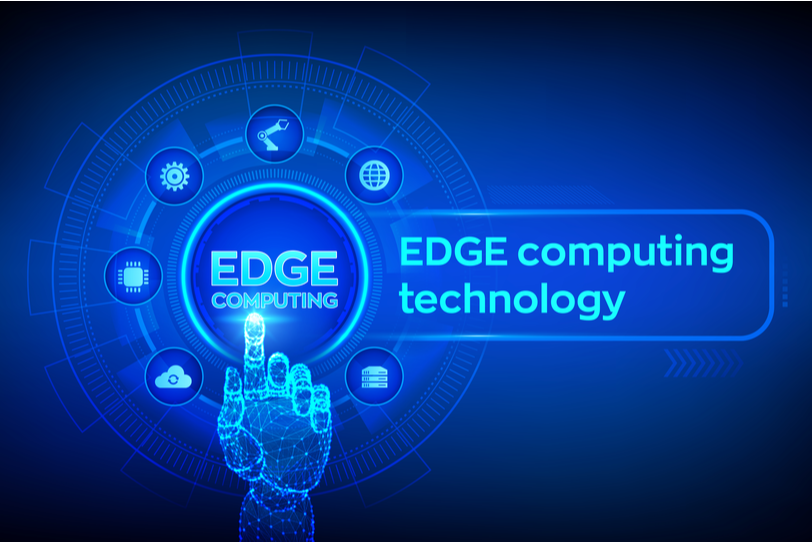What is edge computing? Why is it gaining such traction, and is it related to cloud computing? We will cut through the clutter and resolve much of the confusion so that you can have a full grasp of the term and its underlying principle.
Although a buzzword in technology corridors, edge computing is not a futuristic promise. Instead, it’s a budding technology employed in processing at least 10% of all enterprise-generated data. Just have a look; if you have any wearables on your wrist, it’s most likely utilizing the edge computing principle. According to Gartner, the world’s leading research and advisory company, coming years will see the large-scale application of edge computing across numerous sectors. Data analyzed by Gartner indicates that the numbers are poised to go upward only, and by 2025 edge computing will grow by 75%. That’s promising and surely deserves the buzz. So, let’s move further and understand what edge computing is and what amazing potential it has in store.
What is Edge Computing?
Edge computing has caused a stir in the tech arena similar to cloud computing and IoT. But its popularity lies in its inherent application and the simplicity of the underlying technology. Understand it this way – present-day data processing is largely dominated by centralized cloud computing. The data produced at the source is sent to the cloud, where it is processed, and the subsequent information is relayed back to the source.
While the process is highly efficient, all the data traveling from the source to the data center and then back introduces latency. It’s here that edge computing steps in. Edge computing brings all the power of a data center as close to the data source as possible, thereby reducing latency and optimizing the process. The term edge in edge computing literally denotes the edge of data processing. Instead of sending data to a far-flung cloud storage data center, edge computing brings the cloud in close proximity to the data source itself.
Potential Benefits of Edge Computing
As edge computing is being touted as the next big thing, it definitely has some potential benefits. Let’s look at what edge computing brings to the table:
Reduced Latency
It’s the USP of edge computing and the most talked about feature of the technology. While traditional cloud computing requires data to be sent to the data center, in edge eliminates the need and does the processing closer to the source, in turn reducing latency.
Reduced Bandwidth
Smarter devices backed by edge computing will analyze and process data at the source, while sending only the most needed to the cloud, thereby reducing higher bandwidth requirements.
Enhanced Security and Privacy
With fewer data traveling over a network, edge computing removes security concerns of it being intercepted. Also, data is not centrally stored, which further helps eliminate security concerns.
The Importance of Edge Computing
Edge computing is revolutionizing several areas, and its importance is evident in the following areas:
- IoT and Smart Devices: The Internet of Things (IoT) relies heavily on edge computing for data analysis and real-time decision-making. Devices like smart thermostats, cameras, and sensors benefit from low-latency processing.
- Autonomous vehicles: Edge computing is essential for autonomous vehicles, where split-second decisions are needed for navigation, safety, and connectivity.
- Manufacturing and Industry 4.0: In industrial environments, edge computing is used for predictive maintenance, quality control, and automation, thereby optimizing manufacturing processes.
- Healthcare: Medical devices and telemedicine applications benefit from edge computing, ensuring instant data analysis and patient monitoring.
- Retail: Edge computing can personalize customer experiences, provide in-store analytics, and enable checkout-free stores.
Challenges and considerations
While edge computing brings many benefits, it also poses challenges:
- Data security: As data processing gets closer and closer, security concerns arise. It is essential to protect distributed edge devices from cyber threats.
- Management complexity: Managing distributed edge resources can be complex, requiring powerful monitoring and management tools.
- Scalability: As edge deployments grow, scalability issues arise. It is essential to ensure that edge networks can evolve seamlessly.
- Interoperability: Edge devices and systems must be interoperable and compatible with different standards.
- The future of edge computing: Edge computing is poised to play an even bigger role in the future of technology.
- 5G networks: The deployment of 5G networks will further enhance edge computing capabilities, reduce latency, and improve connectivity for many applications.
- AI and machine learning: AI algorithms deployed at the edge will help make devices more intelligent and autonomous, from drones to robots.
- Edge Cloud: Edge computing will give rise to the concept of “Edge Cloud”, where local cloud resources are deployed at the edge, thereby improving processing capabilities.
- Digital transformation: Edge computing will accelerate the digital transformation of industries ranging from healthcare and manufacturing to transportation and agriculture.
Will Edge Computing Replace Cloud?
While edge is getting all the hype, it’s unlikely to replace the cloud completely. It’s more of a collaboration, where both edge and cloud work side by side to provide a flexible data processing solution depending upon the organization’s need. For smaller workloads, edge provides an ideal solution for real-time analysis and processing, while cloud will be better for more demanding centralized data processing.
Conclusion
Edge computing is more than just a buzzword; this is a transformative change in the way we process and analyze data in our increasingly interconnected world. By reducing latency, improving real-time processing, and improving decision-making at the edge, this innovative computing model opens up new possibilities and opportunities for many more applications and industries. together. As the digital landscape continues to evolve, edge computing will remain at the forefront of technological innovation, changing the way we interact with and benefit from technology.



